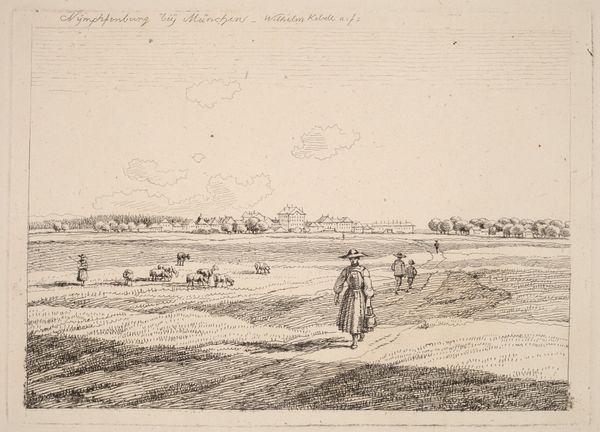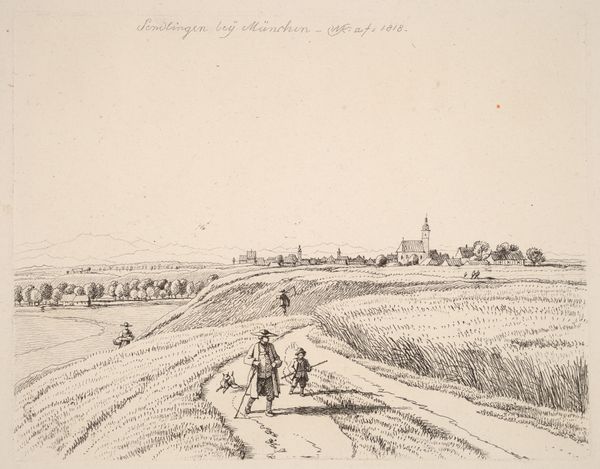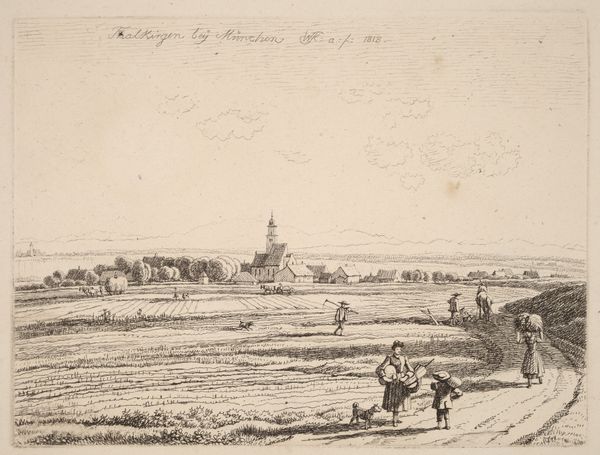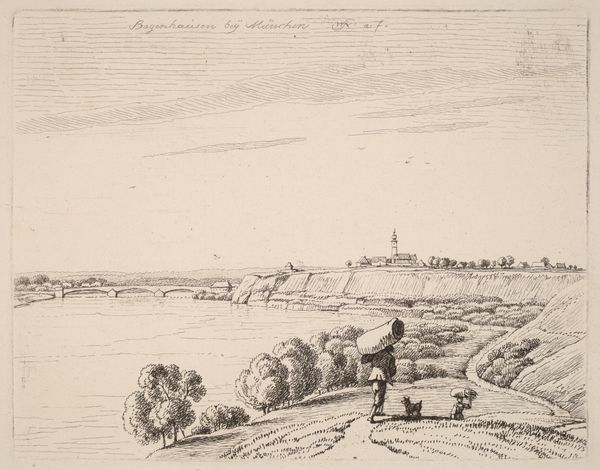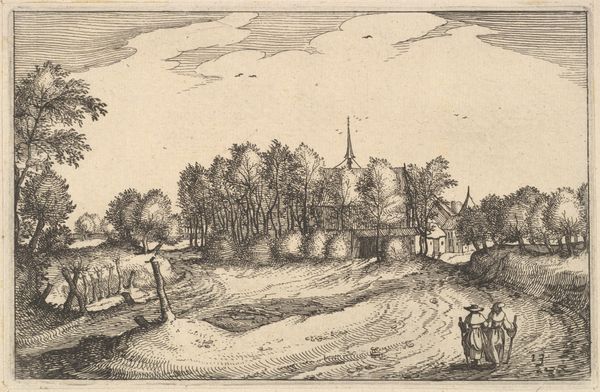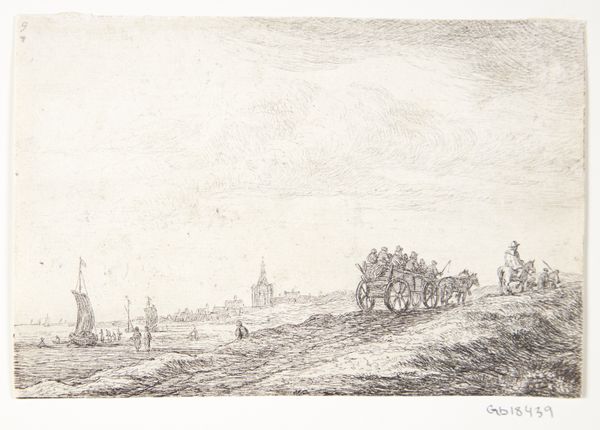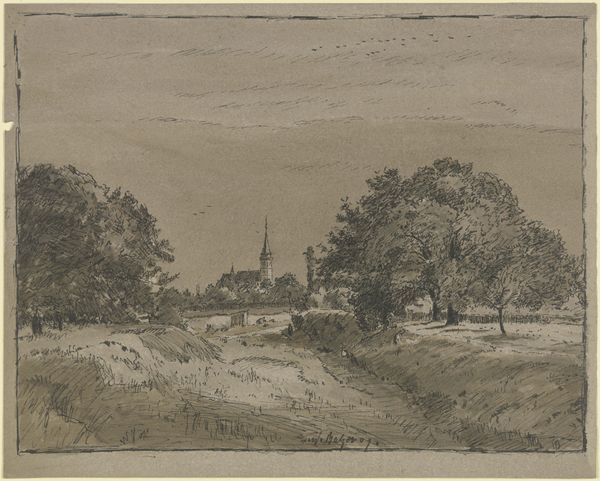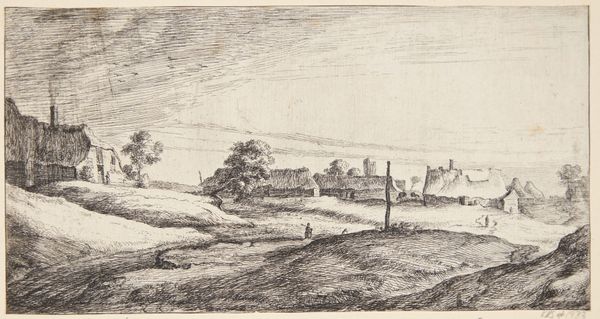
#
pencil drawn
#
amateur sketch
#
light pencil work
#
quirky sketch
# print
#
pencil sketch
#
sketch book
#
personal sketchbook
#
sketchwork
#
pen-ink sketch
#
pencil work
Dimensions: plate: 10.8 × 15.3 cm (4 1/4 × 6 in.) sheet: 21.6 × 29.9 cm (8 1/2 × 11 3/4 in.)
Copyright: National Gallery of Art: CC0 1.0
Wilhelm von Kobell created this print titled "Schwabing" in approximately 1813. It depicts a pastoral scene of peasants working in the fields outside Munich. Kobell's choice of subject matter reflects a broader cultural interest in rural life during the early 19th century. This was a period of significant social and economic change, with the rise of industrialization and urbanization transforming traditional ways of life. Artists like Kobell often romanticized the countryside, presenting it as a simpler, more authentic alternative to the growing complexities of modern society. The composition of the print reinforces this idea, with the vast open fields and small village in the distance emphasizing the harmony between humans and nature. To understand this print more fully, we might turn to historical sources that document the social and economic conditions of Bavaria during this time. By examining tax records, agricultural reports, and other primary sources, we can gain a deeper appreciation for the historical context in which it was made, and a more nuanced understanding of its meaning.
Comments
No comments
Be the first to comment and join the conversation on the ultimate creative platform.
